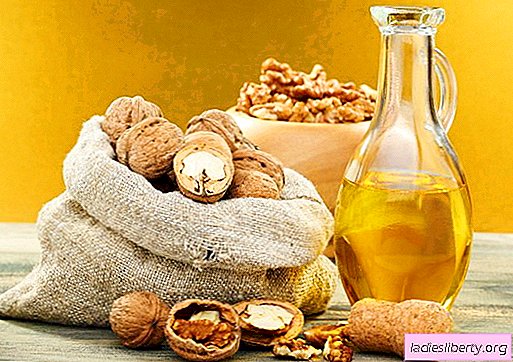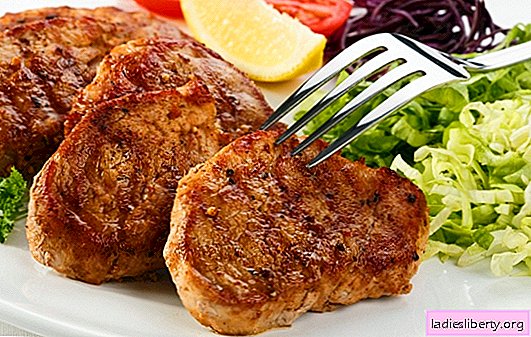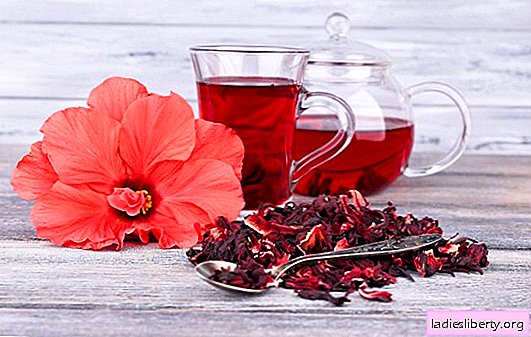
Chinese rose is a type of hibiscus.
His homeland is East Asia. In Haiti, this plant is a symbol of the island.
Thanks to its large bright flowers, hibiscus has become popular among experienced gardeners and just amateurs.
The Chinese rose blooms with terry, simple single flowers of various colors.
Flowers of varietal plants can combine a diverse palette of contrasting shades in the form of specks on the main background, concentric rings and stripes.
There are also varieties with variegated (variegated) foliage.
Chinese rose: home care - breeding, transplanting, pruning
Breeding methods
The Chinese rose is propagated by seeds, cuttings and grafts.
Seed way starts with the right seed selection. You can buy them in specialized stores, from collectors or pollinate your own plants and wait for the ripening of seed boxes. In any case, these will be first-generation F1 hybrids. The germination of Chinese rose seeds is reduced from the second year of storage. If possible, it is better to use fresh seeds of the current year for planting.
The seed material is soaked before planting in Epin for 10-12 hours, then planted in a peat-sand mixture or in universal soil for indoor plants to a depth of 1-1.5 cm.The seed bowl is covered with glass or placed in a mini-greenhouse. Periodic plantings are humidified from the atomizer and ventilated. Seeds germinate at a temperature of + 25-27 ° C. After the appearance of 2-3 leaves, the seedlings dive into separate cups. Plants grown from seeds will bloom after 3-4 years of vegetation and may not retain the varietal characteristics of the mother plant.
Propagation by cuttings faster way to grow chinese rose. For cuttings, a semi-lignified twig is chosen: green shoots, when rooted, easily rot, and old lignified ones do not cope well with callus growth. It is better to take apical cuttings for rooting. The optimal length for the handle is 15 cm. The lower leaves on it are removed, leaving 4-6 upper. If the leaves are large (this applies to varietal hibiscus), then they are cut into ½ or 2/3 of the area to reduce moisture evaporation. Slices are dipped in root stimulants (Kornevin, Roots, etc.).
You can root both in water and in the soil, in which quality peat-sand mixture or perlite is taken. You can use peat tablets.

Hibiscus cuttings rooted in peat tablets
Seedlings are placed in a mini-greenhouse or covered with bags. When the roots appear, they are transplanted into separate pots with a nutritious soil mixture of humus, sod land, sand or perlite (vermiculite) in a 2: 1: 1 ratio. At the bottom of the tank, it is necessary to pour drainage from expanded clay, crushed polystyrene foam or small pebbles - the Chinese rose does not tolerate moisture stagnation. Young plants actively grow and stretch. Therefore, to form a compact bush, they need to pinch the shoots. With good care, flowering can be obtained this year.
The above methods of reproduction are suitable only for ordinary "grandmother" hibiscus. Many varieties of hibiscus from Dutch, Florida, Taiwanese, and Indian breeding do not take root at all. They are vaccinated on a stock, which is used as a rosan.

Vaccination of varietal hibiscus on stock
Transplant and pruning
The Chinese rose is rapidly increasing its crown, therefore, in order to inhibit plant growth under indoor conditions, adult hibiscus are transplanted once every 3-4 years. If the plant is tubal, then only the topsoil is replaced with a fresh one. Young hibiscus transship annually as the volume of the pot is filled with roots.
Hibiscus is grown as bush and as a standard form. To do this, pinch the young green and trim the lignified shoots. Moreover, the buds are laid only on the shoots of the current year. Sprigs are shortened by 2/3 of the length. Cut stalks are used for rooting.
The shape of a bush to a Chinese rose can be given if you cut it radically and leave a stump 7-8 cm high. After 3-4 months, a young shoot will appear at the base of the stem. This method is good in conditions of insufficient space on the windowsill, when there is nowhere to put another pot of plants.
Chinese rose: home care - soil, lighting, flowering conditions
The soil
For the cultivation of Chinese roses, a nutritious soil with a neutral reaction (pH = 6) is suitable. It consists of humus, turf or leafy earth and sand (2: 1: 1). Perlite or vermiculite is added as a disintegrant. When planting, drainage is mandatory, since hibiscus does not like stagnation of water in the soil.
Lighting
Hibiscus needs good diffused lighting. In the spring-summer period, placement on the western or eastern windows will be optimal. On the south side, shading from direct sunlight will be required to avoid leaf burns. In the warm season, the Chinese rose can be sent to "breathe fresh air" in the garden, balcony, terrace. If this is not possible, then you should often air the room. In the autumn-winter season, additional illumination will be required to increase the daylight hours. To do this, use fluorescent lamps, placing them above the plants at a height of 0.5-0.6 m. Due to this, hibiscus will bloom even in winter.
Temperature and humidity
The optimum temperature for the Chinese rose is + 18-25ºС in the summer and 16-18ºС in the winter. They withstand the heat (more than + 28ºС), but with increased humidity (60-70%) and protection from direct rays of the midday sun. Otherwise, in dry air, the malicious hibiscus pest, the spider mite, begins to multiply in mass. "Chinese women" will be happy with a warm soul and daily spraying.
In the cold season, you need to be careful when airing the room - the Chinese rose is afraid of cold drafts.
Chinese rose: home care - top dressing and watering
Hibiscus needs abundant watering during active vegetation and flowering. In autumn and winter, they are watered sparingly, 2-3 days after drying of the top soil layer. The lack of moisture in Chinese roses is poorly tolerated and begins to drop buds and leaves. With waterlogging, it is possible to rot the roots and develop fungal diseases, to which hibiscus is weakly resistant.
The Chinese rose is responsive to fertilizing. They begin to be carried out with the beginning of active vegetation (in March-April). For this, complex fertilizers for flowering indoor plants (Rainbow, Master, Ideal, Terrasol Lux, Pokon, Etisso, etc.) are suitable. Good results are obtained using the drug Baikal-EM1. It contains lactic acid, photosynthetic, nitrogen-fixing bacteria, which improve the quality of the soil and as a result of this increases the immunity of the plant, increases the number of buds and lengthens the flowering period. During budding and flowering, hibiscus need an increased dose of phosphorus and potassium, so during this period you should feed the plants with these fertilizers every 2 weeks.
Important! Fertilizers are applied only after watering the soil, otherwise there will be a chemical burn of the root system!
The main problems when growing a Chinese rose at home
Problems with growing Chinese roses appear with improper care. So, hibiscus begins to "throw" buds with a deficiency of nutrients, drying out the soil, low air temperature.
If the plant does not bloom in the presence of abundant foliage, this indicates that it is overfed with fertilizers with a high nitrogen content, it lacks lighting.
Chlorosis (uneven yellowing) of leaves in hibiscus occurs when there is an increased content of chlorine and calcium salts in irrigation water, a lack of nitrogen and iron, and rotting of the root system during heavy irrigation.

The manifestation of chlorosis on the leaves of a Chinese rose
Dry warm air contributes to the rapid propagation of the main enemy of the Chinese rose - spider mite.

Damaged spider mite leaf of Chinese rose
To control the populations of this pest, it is important to maintain increased humidity in the room: spray plants more often, and give them a warm shower every week. Getting rid of the parasite, if it has already appeared, is difficult, but possible. If there are few ticks, then the flower is treated with a soapy solution. With the ineffectiveness of this method, Acaricides Actellic, Fitoverm, Fufanon etc. are used.
The second most common hibiscus pest is greenhouse whitefly. Adult insects hide on the underside of leaves. On sticky feces, imago develops sooty mushroom (looks like a black velvety coating). As a result, damaged leaves turn yellow and dry prematurely. In addition, whiteflies carry viral diseases (yellow mosaic, curly leaves, etc.). To combat these pests, several treatments with insecticides of various chemical groups (Aktara, Admiral, Mospilan, Biotlin) are performed.











